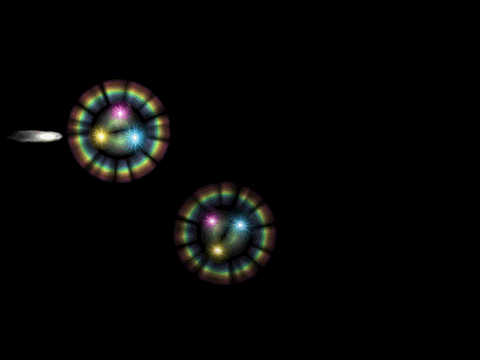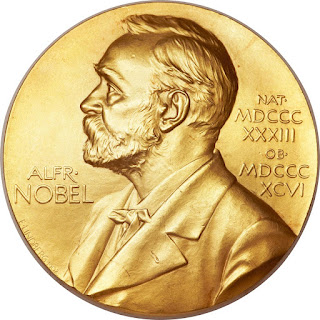Today (November 6, 1932) is the birthday of Francois Baron Englert, winner of the Nobel Prize for theoretical discoveries about the origin of the mass of atomic particles.

Francois Baron Englert was born
on November 6, 1932, into a Belgian Jewish family. During the German occupation
of Belgium in World War II, he had to conceal his Jewish identity and live in
orphanages and children's homes in the towns of Dinant, Lustin, Stoumont and,
finally, Annevoie-Rouillon. These towns were eventually liberated by the US
Army. Francois graduated as an electromechanical engineer in 1955 from the Free
University of Brussels (ULB) where he received his PhD in physical sciences in
1959. From 1959 until 1961, he worked at Cornell University, first as a
research associate of Robert Brout and then as an assistant professor.

He then returned to the ULB where
he became a university professor and was joined there by Robert Brout who, in
1980, with Englert co-headed the theoretical physics group. In 1998 Englert
became professor emeritus. In 1984 Professor Englert was first appointed as a
Sackler Professor by Special Appointment in the School of Physics and Astronomy
at Tel-Aviv University. Englert joined Chapman University's Institute for
Quantum Studies in 2011, where he serves as a Distinguished Visiting Professor.

Brout and Englert showed in 1964
that gauge vector fields, abelian and non-abelian, could acquire mass if empty
space were endowed with a particular type of structure that one encounters in
material systems. Focusing on the failure of the Goldstone theorem for gauge
fields, Higgs reached essentially the same result. A third paper on the subject
was written later in the same year by Gerald Guralnik, C. R. Hagen, and Tom
Kibble. The three papers are written on this boson discovery by Higgs, Englert and
Brout, and Guralnik, Hagen, Kibble were each recognized as milestone papers for
this discovery by Physical Review Letters 50th anniversary celebration. While
each of these famous papers took similar approaches, the contributions and
differences between the 1964 PRL symmetry breaking papers are noteworthy.

To illustrate the structure,
consider a ferromagnet which is composed of atoms each equipped with a tiny
magnet. When these magnets are lined up, the inside of the ferromagnet bears a
strong analogy to the way empty space can be structured. Gauge vector fields
that are sensitive to this structure of empty space can only propagate over a
finite distance. Thus they mediate short-range interactions and acquire mass.
Those fields that are not sensitive to the structure propagate unhindered. They
remain massless and are responsible for long-range interactions. In this
way, the mechanism accommodates within a single unified theory both short and
long-range interactions.


Brout and Englert, Higgs, and
Gerald Guralnik, C. R. Hagen, and Tom Kibble introduced a scalar field as agents of the vacuum
structure (most often called the Higgs field), which many
physicists view as the agent responsible for the masses of fundamental
particles. Brout and Englert also showed that the mechanism may remain valid if
the scalar field is replaced by a more structured agent such as a fermion
condensate. Their approach led them to conjecture that the theory is
renormalizable. The eventual proof of renormalizability, a major achievement of
twentieth-century physics, is due to Gerardus 't Hooft and Martinus Veltman who
was awarded the 1999 Nobel Prize for this work. The
Brout–Englert–Higgs–Guralnik–Hagen–Kibble mechanism is the building stone of
the electroweak theory of elementary particles and laid the foundation of a
unified view of the basic laws of nature.


Englert and Peter Hicks were
awarded the 2013 Nobel Prize in Physics for their theoretical discoveries about
the origin of atomic particle mass. He has won several prizes, including
the 2010 Sakura Prize and the 2004 Wolf Prize. He has made great contributions
in many fields such as cosmology, geology, statistics and physics. He is the
recipient of the 2013 Asturias Prince Award in association with Peter Hicks and
the European Atomic Research Institute.
Source By: Wikipedia
Information: Dr. P. Ramesh, Assistant
Professor of Physics, Nehru Memorial College, Puthanampatti, Trichy.


.jpg)
No comments:
Post a Comment